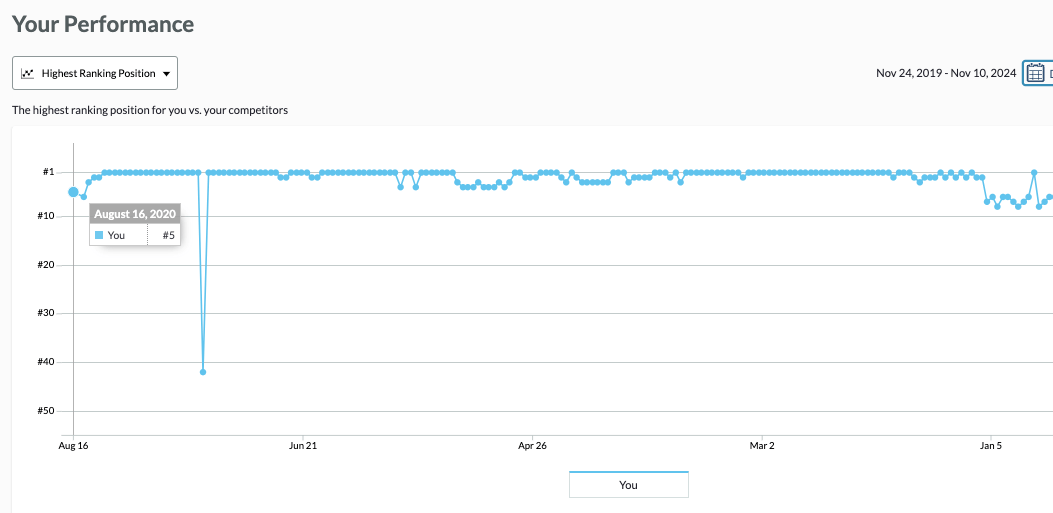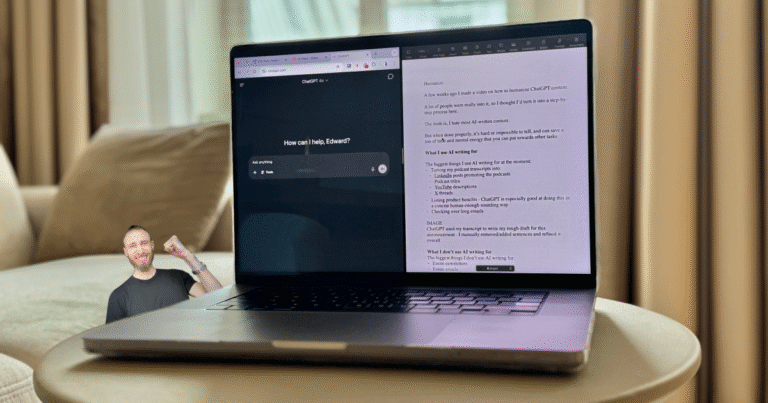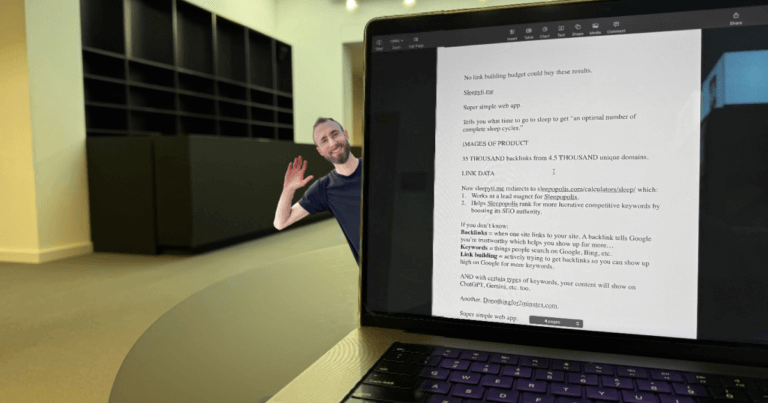I outranked the New York Times in Google Search within 5 minutes of publishing an article that I outsourced for free.
The year was 2020. It was lockdowns. I had expected to take a flight home to NYC. The flight was canceled. I was sitting out lockdowns in the center of Kyiv, Ukraine. It was a crazy time. Everyone was on their computers. I was going all in on SEO.
We created a simple SaaS tool a few months earlier. I launched it on Product Hunt. Educators liked it. It got covered in a few edtech blogs.
I used these blog backlinks to jumpstart a bottom-of-funnel SEO initiative. Target keywords where the searchers know what they want, they just don’t know the brand that will give it to them. This is what I was doing.
The SEO started working. We had more users. Then…
We got to an under 1,000,000 score on Similarweb.
Similarweb ranks websites by the amount of traffic they receive. It’s highly inaccurate. Lots of businesses love it.
One of these businesses was Help a Reporter Out. You may remember Help a Reporter Out from my article last week. They just shut down, but their founder started a new service that works the same, called Source of Sources.

Anyway, back in 2020, Help a Reporter Out was far from shutting down. It was very sought after.
Simple premise: Journalists who need expert quotes for their articles submit a question. Experts answer. Journalists pick their favorite answer. They get their quote and the expert gets press, clout, and backlinks.
But how do they measure who is an authoritative journalist and who is not?
They use Similarweb.
In order to post as a journalist on Help a Reporter Out, your website needs to have a score of under 1,000,000.
So when my SaaS tool got that, I was hyped.
I could get well-known experts to:
- Write for us and then flex on LinkedIn that we included them in our blog – this actually happened.
- Write entire articles for us – asking for entire articles was against the rules of Help a Reporter Out but I was determined to make it happen.
Here’s how I did it
First, nobody was going to take my brand seriously if it was me, the founder, posting the question as a journalist. I needed to make our new SaaS look like a bigger company.
I created a fake journalist with a fake photo. I gave her a Twitter where she posted about her favorite foods and other nonsense a few times a month. If you Googled her, she looked real enough. In her email signature it said, “Editor.”
She posted Help a Reporter Out questions in edtech – we had decided to go in on that niche after the edtech blogs included us. She asked a question and said more words, detail, and paragraphs were preferable. Not against the guidelines of Help a Reporter Out. Not yet.
Here’s where she changed up the game.
Once she got a decent response, she’d follow up. “This is excellent! I could actually see this being a full article on our main blog. Would it be possible to add 200 – 500 more words to this? Thank you so much!!!!”
This is the actual follow up message she sent. It was me writing that as our fake editor.
That’s all it took.
This simple response from our fake editor was always enough to get an entire article from an expert.
SEO
The thing is, many experts responding are just normal experts who don’t know the first thing about SEO.
A lot of them are using Help a Reporter Out for clout and distribution, not backlinks. They think that by being included in our SaaS blog it will get their business more customers and it will be a good flex on LinkedIn. They don’t even know about Similarweb and its rankings and all of this.
Then there was me.
SEO is what I do. It is my life.
I used Help a Reporter Out for backlinks, to tell Google’s algorithms what my businesses are about, and of course – to flex on LinkedIn.
But when I realized I could use it to outsource content – that was a game changer.
So while doing keyword research I came across a keyword I liked. “Will distance learning be permanent?” The reason I liked it was it was high volume because of lockdowns, and no other websites were targeting it properly.
The ranking websites for it did not have it in their:
- Page title
- Meta description
- URL
- H1
- First sentence
Those are the places you want your keyword to appear. Nobody was targeting it like this. The New York Times was ranking #1 for this keyword with a similar article, but it wasn’t targeting this exactly.
One of my journalist queries with the fake journalist was basically, “We’re writing an article about if distance learning will be permanent. Please share your thoughts and credibility in education. Longer answers will be rewarded, so feel free to write as much as you can on this!”
After the bulk of the article was written by the expert, all I had to do was proofread, add images, and put the keyword in the correct places above.
And that’s exactly what I did.
Now it’s never this fast
Ranking on Google is never usually this fast.
I think in this case it was due to an increasing amount of weekly users from my bottom-of-funnel SEO pages, overall relevance of our site to the keyword, and my precise targeting.
Either way, I was dumbstruck.
This had never happened before. And this has never happened since. I thought it was a glitch.
I did the usual – published my new page, added the keyword to my keyword tracking tool, then submitted the page to Google Search Console so that Google would know it exists.
5 minutes later the page was ranking #1. The New York Times was now ranking… #2… right below our page published 5 minutes ago.
I called up my cofounder at home in NYC. I asked him to check too. He saw the same thing.
I will say – when a site is doing well – it is not unusual to rank fast for a keyword. But 5 minutes is incredible and we had only just surpassed an under 1 million score on Similarweb.
We don’t rank #1 for this keyword anymore, but this was the first few years ranking for it:

After starting at position #1, Google dropped us down within days to position #5. Google is a volatile beast and this was for several reasons:
- Google hates when it thinks you understand it. Understanding exactly how it works makes it more likely you will game it and rank bad content. This harms searchers and as a result harms Google. The random volatility makes you focus more on the fundamentals (“write good content”).
- Google is constantly testing. Testing click-through rate. Testing retention. Testing engagement.
Regardless, as you can see from the image, we quickly got back up to #1 and stayed there for years.
The craziest thing
A few months after publishing this article, we got into an edtech accelerator.
I honestly don’t even know how to preface this next part, it is so wild.
The amount of people in our cohort was small. Under 20, if I recall.
One of them was…
You guessed it.
The person who guest wrote this article!
The accelerator was remote and I scheduled a video chat with her. She was accomplished in her own right and I wanted to meet her.
I told her everything. Similarweb. The fake journalist. The keyword targeting. And her article which was then still ranking #1 for the keyword.
She wasn’t even angry.
The keyword at the time had tons of educators and parents searching it.
And the qualified traffic was great for us both.










